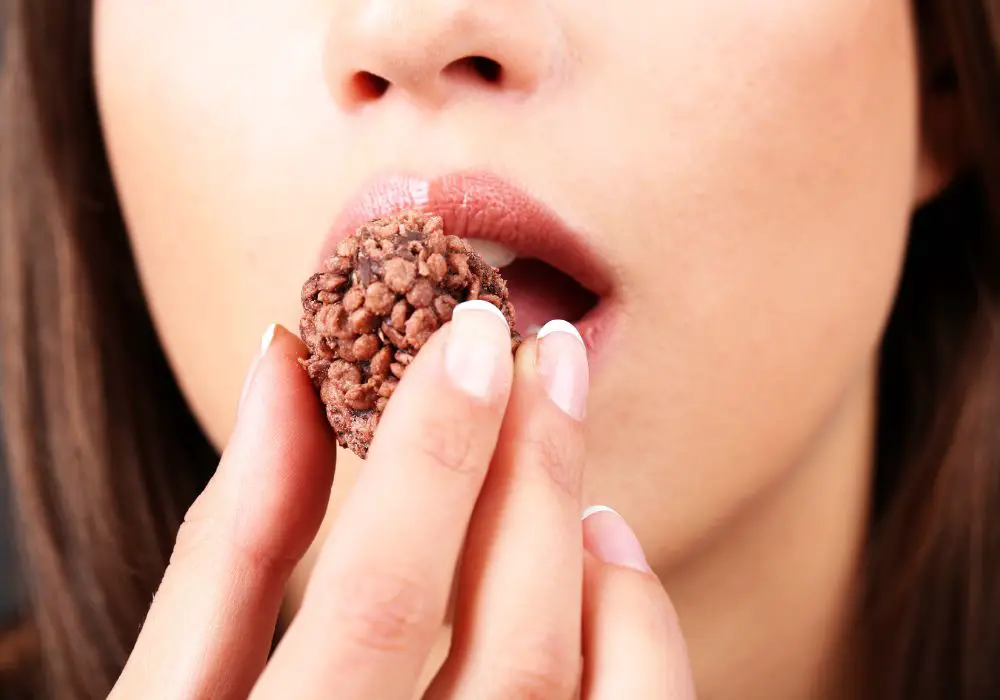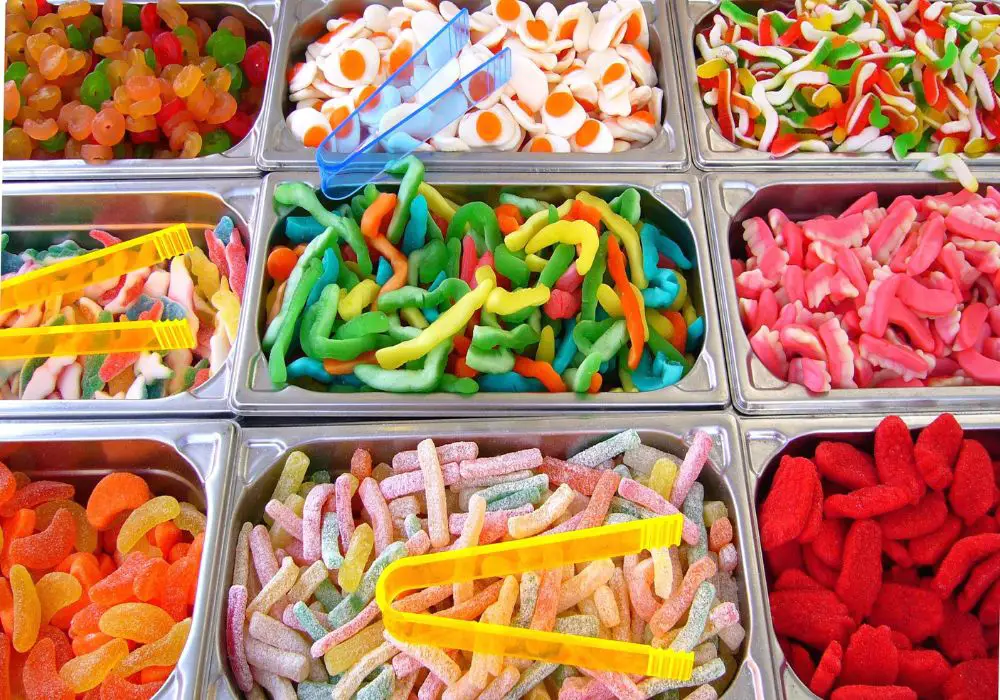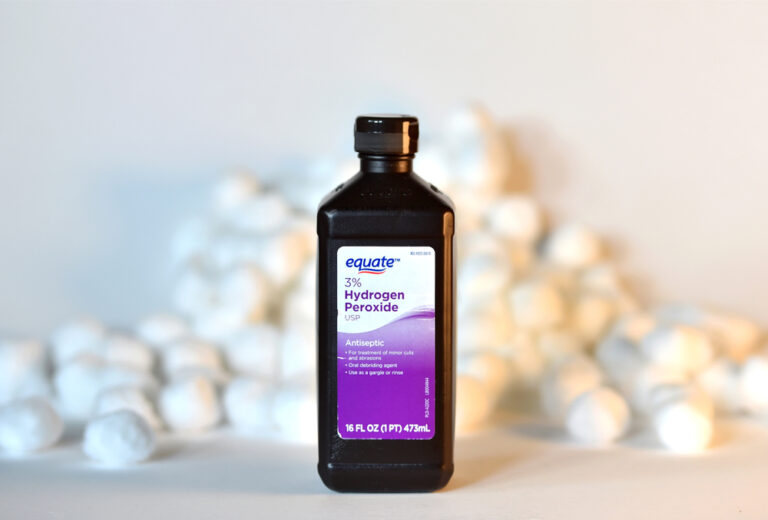Eating candy is an enjoyable experience for many people. The burst of sweetness lights up the brain’s reward pathways. However, most candies also wreak havoc on dental health. Their high sugar content feeds oral bacteria that erode tooth enamel. Acids in some candies directly dissolve tooth minerals. The stickier a candy is, the longer it adheres to teeth, prolonging the decay process. While no candy is truly good for your teeth, some are less likely to cause cavities and other dental issues. Understanding the tooth-friendly options can help you indulge your sweet tooth more safely.
How Candy Damages Teeth

Candy can harm your teeth in several ways:
Promotes Tooth-Decaying Bacteria
The bacteria naturally present in our mouths feed on simple sugars and ferment them into acids. Common offenders include Streptococcus mutans and Lactobacillus. The acidic byproducts dissolve the minerals in tooth enamel in a process called demineralization. Saliva helps neutralize some of the acid and replenish lost minerals through remineralization.
Most candies contain high concentrations of sugars like sucrose, glucose, fructose, maltose, or corn syrup. These provide ample nourishment for acid-producing microbes. Sucrose molecules are especially good at binding to the surfaces of teeth, creating a sugary film. This allows oral bacteria to thrive near the enamel, where they can do the most damage.
Over time, cycles of demineralization and remineralization may produce visible tooth decay, or cavities. The more often you eat candies high in fermentable sugars, the more acid gets produced, and the faster cavities can form.
Are Acidic Themselves
Many popular candies also contain added acids, like citric acid, malic acid, phosphoric acid, or tartaric acid. Their sour flavors come from these acid compounds rather than sugar fermentation. The acids lower pH in the mouth, dissolving calcium and phosphate minerals directly from enamel through chelation. Prolonged exposure to acidic candies can erode significant amounts of enamel.
Sour candies are especially acidic, with a pH as low as 2. This is within the same range as battery acid! Extremely acidic conditions like this leach minerals rapidly. Surprisingly, warheads and other sour candies typically contain less sugar than traditional sweets. But their low pH overrides any benefit of lower sugar levels.
Adhere to Teeth Surfaces
Some candies are stickier than others due to added humectants like glycerin that help retain moisture. Taffy, caramels, jelly beans, gummy bears, and cotton candy cling to teeth tenaciously. Their gummy textures prolong their contact time with enamel. This extends the duration of sugar exposure and bacterial acid production. Pieces of candy can get trapped between teeth or under dental work for hours.
The combination of sugar and stickiness makes some candies especially cariogenic, or cavity-causing. The adherence allows oral bacteria prolonged access to their energy source. Children are prone to cavities from sticky candies because their enamel is still developing mineralization and thickness. Adults with crowns, braces, dentures, or other tooth imperfections also accumulate more debris in tricky spots.
Candies Less Harmful to Teeth

While no candy is great for your dental health, these options are gentler on enamel than traditional sweets:
Dark Chocolate
Chocolate contains tannins that may limit some bacterial adhesion and acid production. Cocoa butter and milk proteins also provide some protection by coating teeth to reduce sugar contact time. Ounce for ounce, dark chocolate contains much less sugar than milk chocolate, making it the better choice. Go for at least 70% cocoa solids.
However, chocolate also contains sugars and starches that feed bacteria once cleared from the mouth. Keep portion sizes small, and consume chocolate as part of a meal to limit its decay potential. Rinse your mouth with water or chew gum after eating it.
Xylitol Candy
Xylitol is a sugar alcohol sweetener that is harder for oral bacteria to digest than sucrose. It has 40% fewer calories and does not spike blood sugar like other sweeteners. Xylitol starves S. mutans and other microbes that produce cavity-causing acids. It also reduces the stickiness of dental plaque, so less adheres to teeth.
Studies show that chewing xylitol gum or eating xylitol mints after meals can reduce cavity formation, repair precavities, and even reverse early tooth decay. Aim for at least 6-10 grams of xylitol per day split into 3-5 exposures. Xylitol gum is available in most grocery stores now. Mints and candies made with 100% xylitol can be purchased online.
Licorice
Real black licorice gets its signature flavor from licorice root extract, not sugar. The extract contains glycyrrhizin, which has antibacterial properties that may benefit oral health. Licorice has low cariogenic potential, though overindulgence has other adverse effects. Look for real licorice made with licorice extract, not artificial fruit snacks marketed as licorice. Anise oil is sometimes used as a substitute flavoring but does not provide the same benefits.
Sugar-Free Chewing Gum
When you chew gum, you produce more saliva. This helps clear food debris and neutralize plaque acids. The increased saliva flow strengthens teeth through remineralization. Chewing also stimulates the gums. Opt for sugar-free gum to avoid increasing bacterial sugar intake. Gum sweetened with xylitol provides the most oral health benefits.
Candies Most Destructive to Teeth
On the other end of the spectrum, these treats wreak the most havoc on your dental health:
Hard Candies
Lollipops, mints, lozenges, and other hard candies take the longest time to dissolve. This constantly bathes teeth in sugar, allowing time for bacterial populations to explode. Acidic hard candies are doubly damaging. Prolonged contact between enamel and sugar is terrible for teeth.
Cotton Candy
Cotton candy is pure spun sugar. The fluffy texture provides endless crevices for bacteria to thrive. It sticks to teeth tenaciously, prolonging acid production. Bits of cotton candy can become tightly lodged between teeth or around braces and dental work. All traces must be removed meticulously to avoid continued decay once out of the mouth.
Taffy and Caramels
The sticky, chewy texture of taffy and caramels allows them to adhere to teeth for hours. Their sugars get trapped against enamel, encouraging white spot lesions and eventually cavities. Taffy is especially problematic for dental work like braces or bridges that provide crevices for it to grab onto.
Sour Candies
Warheads, Sour Patch Kids, and other soured treats contain acid concentrations strong enough to damage tooth minerals directly, even without their sugar content. Prolonged exposure to extreme acidity erodes enamel rapidly. Sour candy is best avoided, especially by those prone to acid wear like people with gastric reflux.
Sugared Gummy Bears
Gummy candy gets its chewy texture from gelatin, a largely inert ingredient. However, most gummies are also coated with a sugary film. Their stickiness allows oral bacteria to thrive for hours, slowly metabolizing sugar into enamel-eating acid. Seek out sugar-free gummy options, or enjoy gummi bears at the end of a meal and rinse afterward.
Tips for Reducing Candy’s Damage

Candy consumption should be occasional and limited. But when you do indulge your sweet tooth, follow these tips to protect your pearly whites:
- Choose less sticky, less acidic options like chocolate and licorice over taffy and sours.
- Consume candy as dessert after a meal, not on its own. The increased saliva flow while eating will help clear it from your mouth faster. Drink water afterward.
- Chew sugar-free gum after eating sweets to increase saliva production and neutralize acids.
- Don’t brush immediately after consuming candy. Wait at least 30 minutes for your enamel to reharden first.
- Rinse your mouth well with water to help dislodge any remaining bits of candy, especially sticky kinds. Floss carefully.
- Limit candy intake to mealtimes. Avoid snacking on sweets throughout the day to limit acid production windows.
- Get regular dental cleanings every 6 months to remove the bacterial biofilm and debris that lead to decay.
The Takeaway
Most candies promote tooth decay because of their sugar content, acidity, or stickiness. Sour candies, cotton candy, taffy, gummy bears, and lollipops tend to be the worst for dental health. Dark chocolate, sugar-free gum, xylitol mints, and real black licorice are gentler options. But no candy is as tooth-friendly as not eating candy at all. With moderation and proper oral hygiene, enjoying the occasional treat doesn’t have to spell disaster for your teeth. Just be mindful of good habits before and after indulging your sweet tooth.
Frequently Asked Questions
Q: Why are sour candies so bad for teeth?
A: Sour candies contain high concentrations of acids like citric acid, malic acid, or phosphoric acid that lower pH dramatically in the mouth. This acidic environment directly erodes tooth enamel through chelation of minerals. The acids in sour candy essentially dissolve enamel the same way citrus juices or acidic beverages do. Prolonged contact with the extreme acidity damages teeth much more rapidly than sugar alone.
Q: Can hard candies help strengthen teeth?
A: No, quite the opposite. While some believe hard candies increase saliva production, the constant sugar bathing effect is very damaging. Oral bacteria feed on the concentrated sugars for hours, fueling acid production. Sticky foods are more likely to provide mild abrasion that strengthens enamel. Hard candies just provide prolonged access of bacteria to sugar against vulnerable enamel.
Q: Is it okay to give gummy candies to toddlers?
A: Pediatric dentists recommend avoiding gummy candies for young children, especially those under age 4. Toddler teeth are still developing enamel thickness and mineralization. The combination of stickiness and sugar in gummies allows cavity-causing bacteria to thrive on their teeth for hours. While gelatin itself isn’t harmful, the sugar coating adheres firmly to uneven toddler enamel, promoting decay.
Q: How much xylitol per day helps strengthen teeth?
A: Research suggests consuming 6-10 grams of xylitol divided into at least 3 exposures per day provides dental health benefits. This reduced bacterial growth and increases mineral-rich saliva flow. Xylitol gum containing 1 gram per piece is widely available. Mints with higher percentages of xylitol can also help meet daily targets more easily.
Q: Can chocolate be good for teeth?
A: Chocolate contains tannins that may inhibit bacterial adhesion and reduce plaque formation compared to other candies. Its lower sugar content, cocoa fats, and protein also help limit decay potential. However, chocolate still promotes more cavities than not eating candy. Dark varieties are better than milk chocolate. Enjoy small portions as dessert, not as a snack, and rinse your mouth after eating it.







